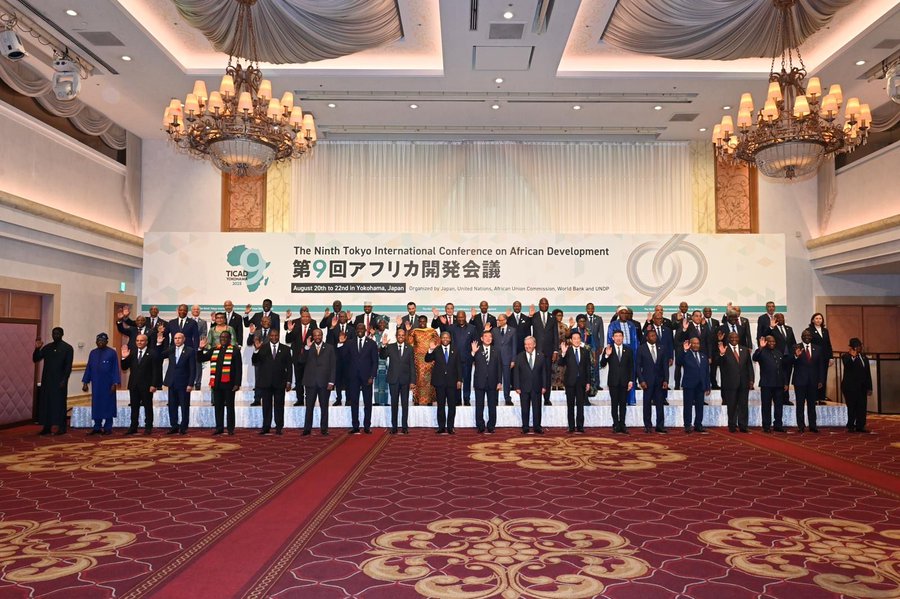Heat stress on the rise, slashing work productivity by 2-3 per cent, report warns

Manual labourers in sectors such as agriculture, construction and fisheries are particularly vulnerable, as they face prolonged exposure to dangerous heat conditions.
Climate change is increasingly taking a toll on workplace productivity, leading to missed opportunities in economic development worldwide.
Among the main contributors to this decline is heat stress, which has increased significantly over the past 50 years and reached critical levels in 2024.
More To Read
- From sea ice to ocean currents, Antarctica is now undergoing abrupt changes
- It’s time to end physical punishment of kids once and for all, WHO says
- Diphtheria cases surge in Somalia amid sharp US aid cuts
- Africa’s top climate change challenges: A fairer deal on phasing out fossil fuels and mobilising funds
- Over 600 million Africans still need treatment for neglected tropical diseases, WHO warns
- Talks on global plastic pollution treaty end in Geneva without consensus
According to a new report by the World Health Organisation (WHO) and the World Meteorological Organisation (WMO), extreme heat events are becoming more frequent and intense, severely impacting workers’ health and productivity.
The joint report, titled Climate Change and Workplace Heat Stress, reveals that heat stress is now responsible for reducing work productivity by 2-3 per cent for every degree Celsius above 20°C.
Manual labourers in sectors such as agriculture, construction and fisheries are particularly vulnerable, as they face prolonged exposure to dangerous heat conditions.
Notably, developing countries bear the brunt of these impacts, with vulnerable groups including children, older adults and low-income populations experiencing heightened health risks.
“Heat stress is already harming the health and livelihoods of billions of workers, especially in the most vulnerable communities,” said Jeremy Farrar, WHO Assistant Director-General for Health Promotion, Disease Prevention, and Care.
In 2024, the planet recorded its hottest year on record, with daytime temperatures surpassing 40°C and even 50°C becoming increasingly common.
This translated to temperatures reaching a startling 1.6°C above pre-industrial levels, the period before humans began burning large amounts of fossil fuels.
It made 2024 the first calendar year to breach the critical 1.5°C threshold that nations pledged to avoid under the Paris Agreement.
This international accord, signed in 2015, set a global target to limit global warming to 1.5°C above pre-industrial levels, in an effort to mitigate catastrophic climate disruptions.
On her part, WMO Deputy Secretary-General Ko Barrett stressed that occupational heat stress has evolved into a global societal challenge, no longer confined to equatorial regions, and that protecting workers from extreme heat is both a health imperative and an economic necessity.
The report findings also detail the health consequences of extreme heat on workers, including heatstroke, dehydration, kidney dysfunction, and neurological disorders.
These conditions reportedly jeopardise not only immediate health but also long-term economic security for affected workers.
The report estimates that approximately half the global population suffers adverse effects from rising temperatures, underscoring the scale of the challenge.
Complementing these findings, the International Labour Organisation (ILO) reports that more than 2.4 billion workers globally face excessive heat exposure, contributing to over 22 million occupational injuries each year.
To address this growing crisis, the WHO and WMO urge governments, employers, and health authorities to develop and implement occupational heat action plans tailored to specific industries and local climates.
The plans must be created in partnership with workers, trade unions, and public health experts to ensure effectiveness.
The organisations emphasise that special focus should be given to vulnerable workers, particularly middle-aged and older adults, as well as individuals with chronic health conditions, who are more prone to heat stress.
The report further recommends including education campaigns to improve recognition and treatment of heat stress symptoms, stakeholder engagement in heat-health strategy development, and the adoption of innovative technologies to protect worker health while maintaining productivity.
Emphasis is placed on designing solutions that are practical, affordable, and environmentally sustainable to allow wide-scale implementation.
Top Stories Today













































